Computer Space
 The Game: Two ships are locked in deadly deep-space combat, firing interplanetary ordnance at each other. Whoever survives the most confrontations within a set amount of time is the victor. In the game’s one-player variation, the machine controls one ship, and a two-player version was also made. (Nutting & Associates, 1971)
The Game: Two ships are locked in deadly deep-space combat, firing interplanetary ordnance at each other. Whoever survives the most confrontations within a set amount of time is the victor. In the game’s one-player variation, the machine controls one ship, and a two-player version was also made. (Nutting & Associates, 1971)
Memories: To go all the way back to the beginning of video games in the arcade is to go back to Computer Space – which is also arguably the first arcade flop.
The idea behind the game wasn’t exactly new – it was almost a decade old, in fact. Steve Russell’s college mainframe favorite Spacewar! had captured the attention of a college student named Nolan Bushnell. Having served his own apprenticeship as a carnival barker in his younger years, Bushnell was sure he could sell anyone on entertainment, and he knew a potentially exciting new medium for that entertainment when he saw one. [read more]





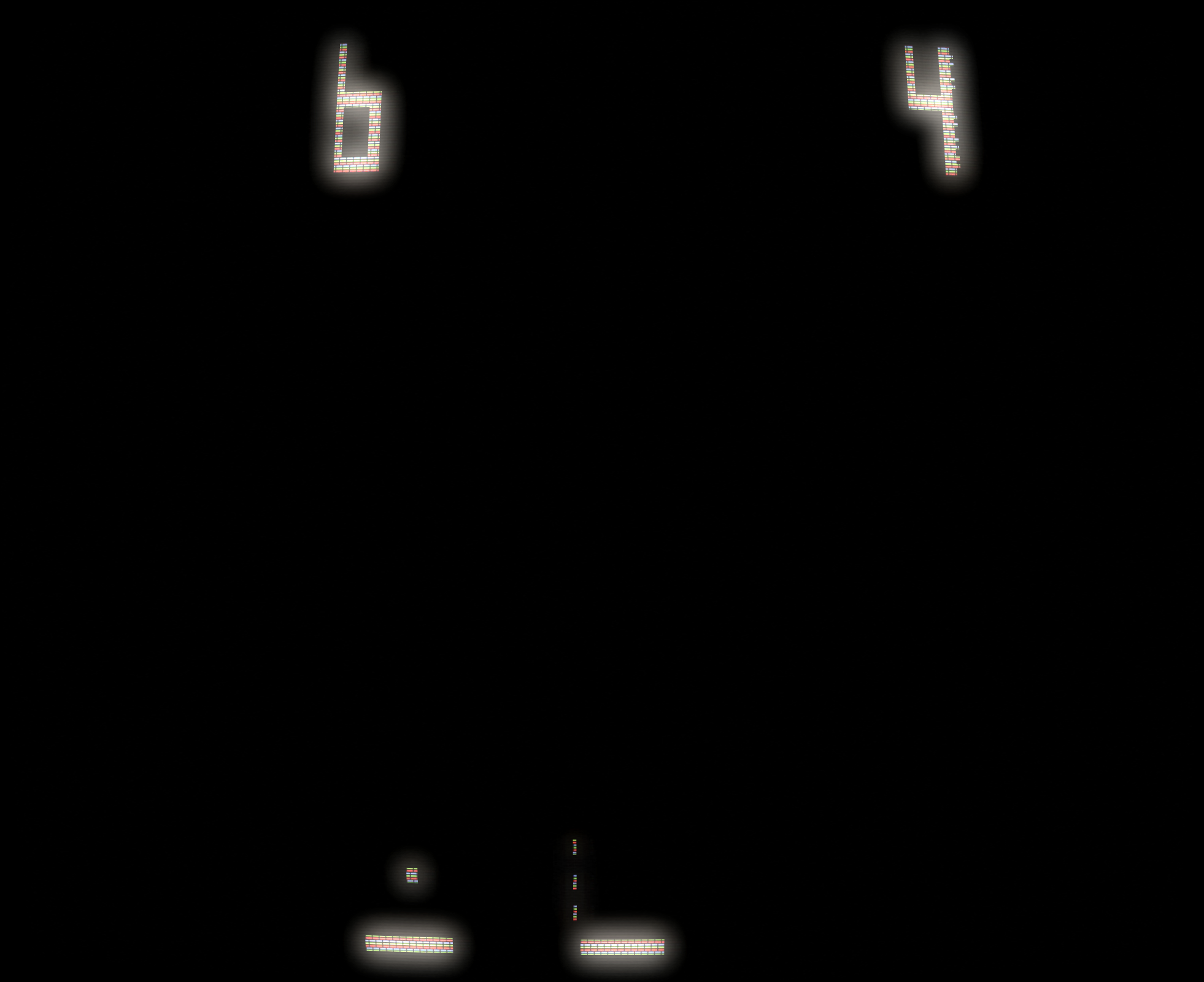
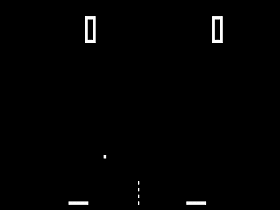 The Game: Live in glorious black & white, it’s the first-ever game of video volleyball! Two players square off – well, okay, rectangle off – against each other as horizontal Pong paddles situated on either side of a dotted-line “net.” The ball drops out of mid-air toward one player or the other, who must move into place to (hopefully) bounce the ball into the right direction. It may take a couple of tries to get the ball over the net, but don’t let it take three bounces or you forfeit a turn (and a point). (Atari, 1973)
The Game: Live in glorious black & white, it’s the first-ever game of video volleyball! Two players square off – well, okay, rectangle off – against each other as horizontal Pong paddles situated on either side of a dotted-line “net.” The ball drops out of mid-air toward one player or the other, who must move into place to (hopefully) bounce the ball into the right direction. It may take a couple of tries to get the ball over the net, but don’t let it take three bounces or you forfeit a turn (and a point). (Atari, 1973)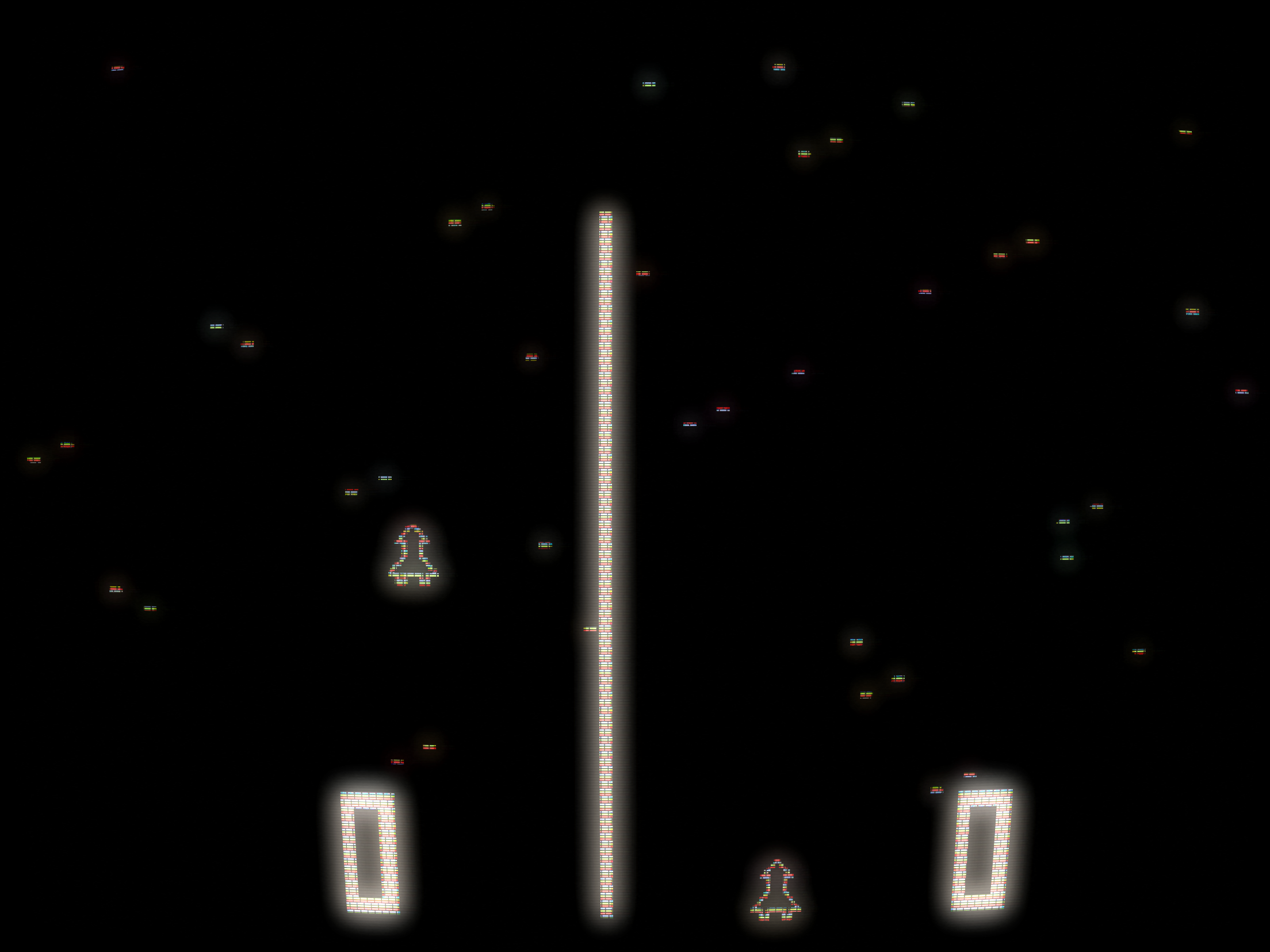
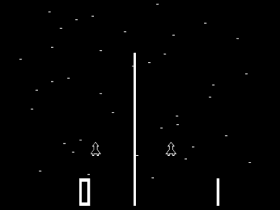 The Game: Two rockets stand ready to lift off for a race into space teeming with fast-moving asteroids and space debris. Collision with even the tiniest piece of space junk sends a player’s rocket back to the bottom of the screen, with a slight time penalty (possibly for repairs) before it can lift off again. A vertical line in the center of the screen serves not only to divide the screen into “lanes” for each rocket, but to count down the amount of time remaining in the game. Whoever has the highest score when time runs out is the winner of the space race. (Atari, 1973)
The Game: Two rockets stand ready to lift off for a race into space teeming with fast-moving asteroids and space debris. Collision with even the tiniest piece of space junk sends a player’s rocket back to the bottom of the screen, with a slight time penalty (possibly for repairs) before it can lift off again. A vertical line in the center of the screen serves not only to divide the screen into “lanes” for each rocket, but to count down the amount of time remaining in the game. Whoever has the highest score when time runs out is the winner of the space race. (Atari, 1973)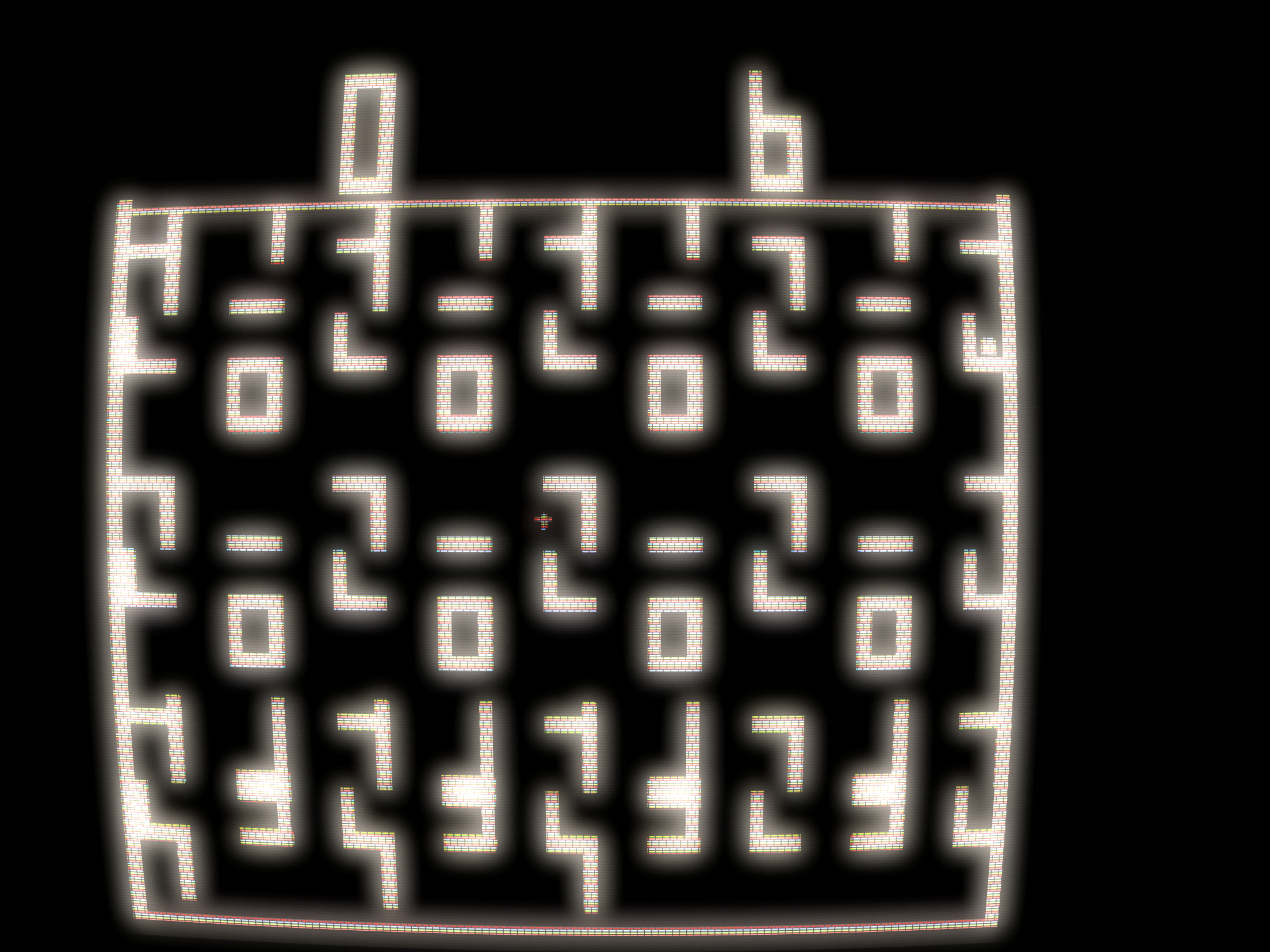
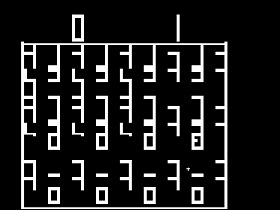 The Game: Two players – one represented by a roving square and the other by a plus sign – roam the ever-changing halls of a maze. The object of the game is for one player to catch the other before time runs out; however, the maze’s ability to constantly reconfigure itself isn’t going to make that easy. (Atari, 1974)
The Game: Two players – one represented by a roving square and the other by a plus sign – roam the ever-changing halls of a maze. The object of the game is for one player to catch the other before time runs out; however, the maze’s ability to constantly reconfigure itself isn’t going to make that easy. (Atari, 1974)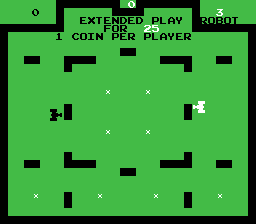 The Game: Two players each control a fearsome armored fighting vehicle on a field of battle littered with obstacles. The two tanks pursue each other around the screen, trying to line up the perfect shot without also presenting a perfect target if they miss. In accordance with the laws of ballistics and mass in the universe of Saturday morning cartoons, a tank hit by enemy fire is bounced around the screen, into nearby wall or mines, spinning at a very silly velocity, and battle begins anew. (Kee Games [Atari], 1974)
The Game: Two players each control a fearsome armored fighting vehicle on a field of battle littered with obstacles. The two tanks pursue each other around the screen, trying to line up the perfect shot without also presenting a perfect target if they miss. In accordance with the laws of ballistics and mass in the universe of Saturday morning cartoons, a tank hit by enemy fire is bounced around the screen, into nearby wall or mines, spinning at a very silly velocity, and battle begins anew. (Kee Games [Atari], 1974)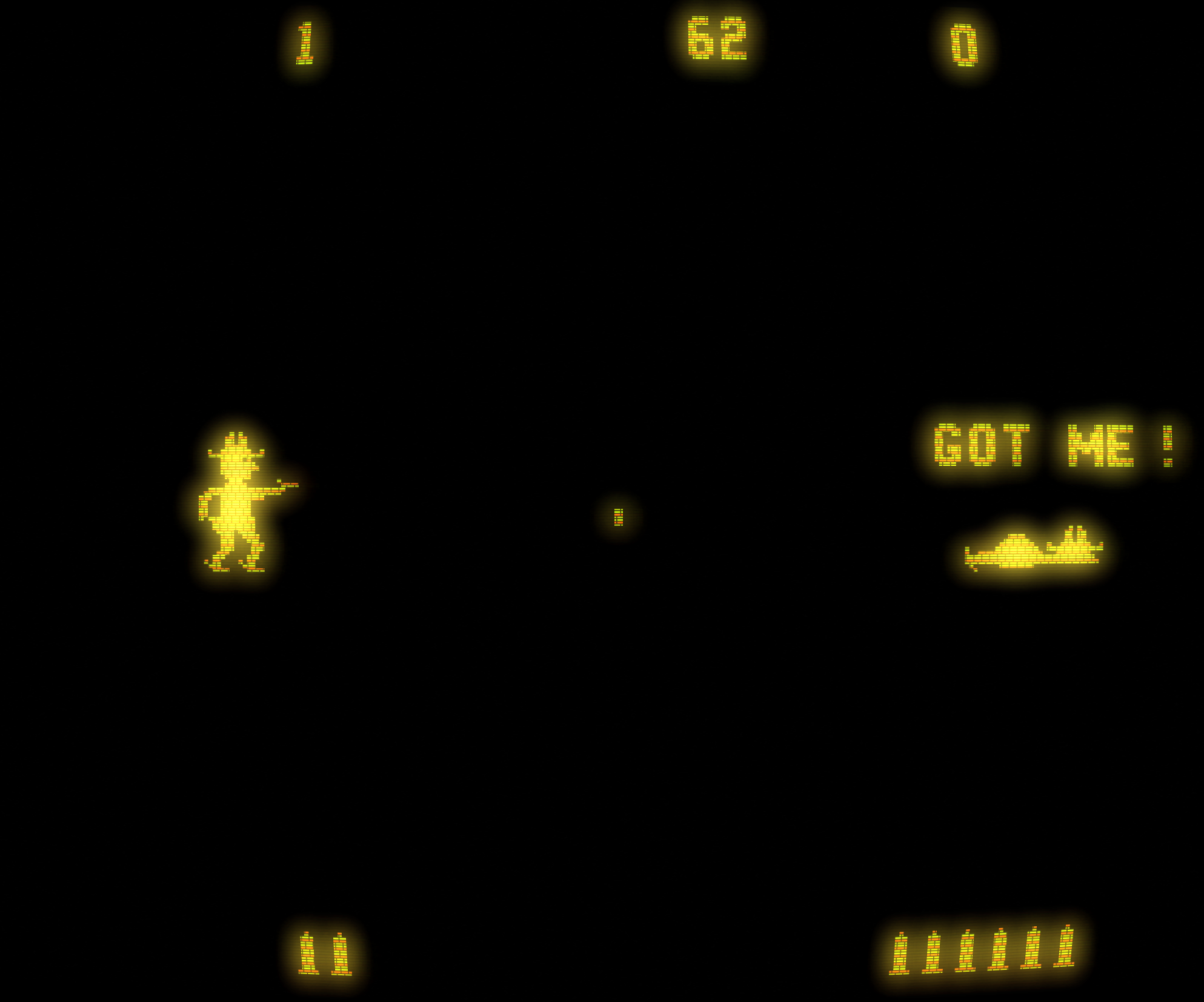
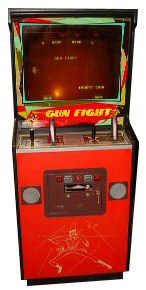 The Game: Grab yer guns and draw, sonny! You face off against another player, with only six bullets and plenty of obstacles in the way – a pesky cactus or two, a roaming covered wagon, and so on. Whoever lines his opponent’s belly with lead first wins the round, and the final victory goes to whoever wins the most rounds. (Midway, 1975)
The Game: Grab yer guns and draw, sonny! You face off against another player, with only six bullets and plenty of obstacles in the way – a pesky cactus or two, a roaming covered wagon, and so on. Whoever lines his opponent’s belly with lead first wins the round, and the final victory goes to whoever wins the most rounds. (Midway, 1975)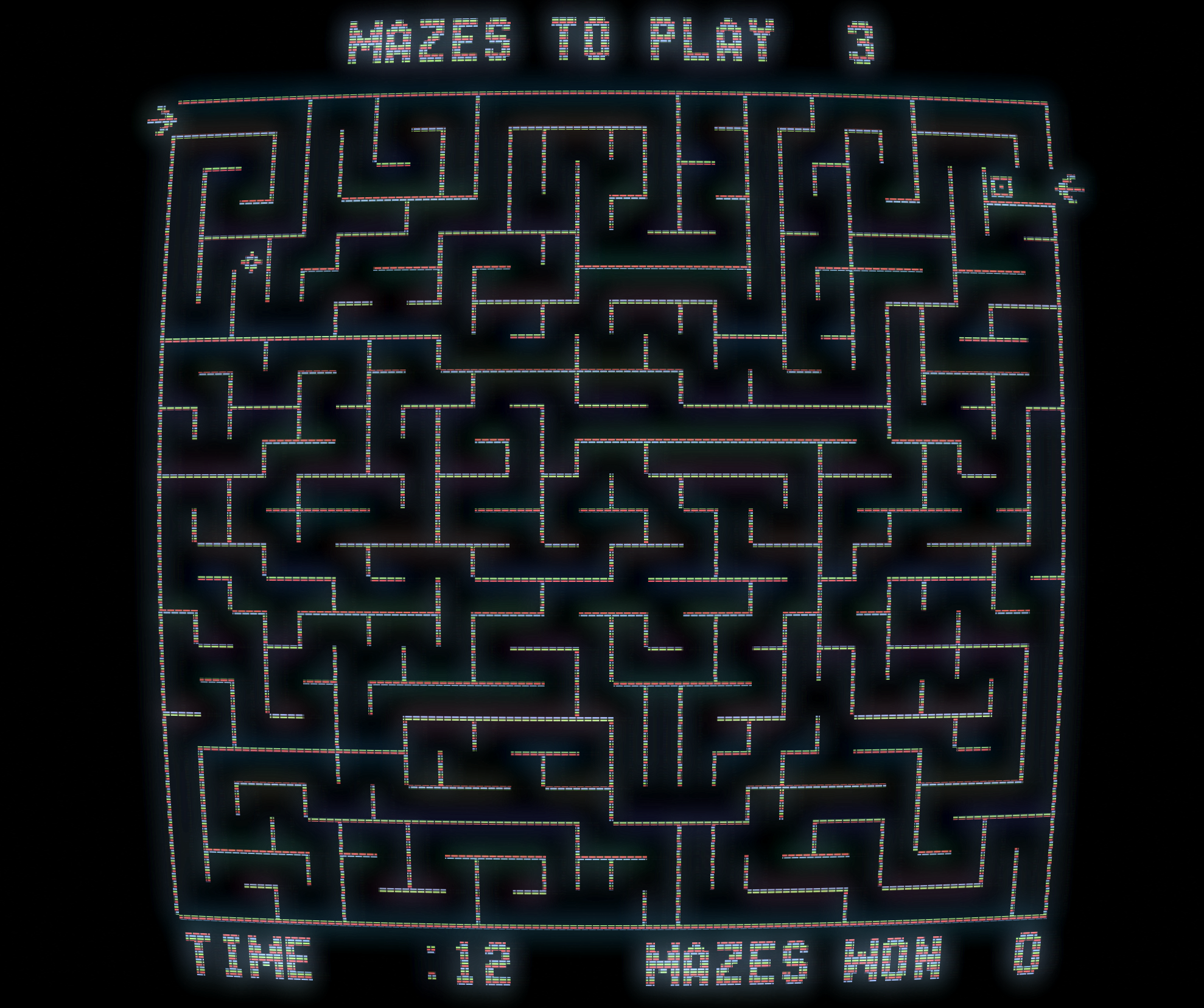
 The Game: You control a dot making its way through a twisty maze with two exits – one right behind you and one across the screen from you. The computer also controls a dot which immediately begins working its way toward the exit behind you. The game is simple: you have to guide your dot through the maze to the opposite exit before the computer does the same. If the computer wins twice, the game is over. (Midway, 1976)
The Game: You control a dot making its way through a twisty maze with two exits – one right behind you and one across the screen from you. The computer also controls a dot which immediately begins working its way toward the exit behind you. The game is simple: you have to guide your dot through the maze to the opposite exit before the computer does the same. If the computer wins twice, the game is over. (Midway, 1976)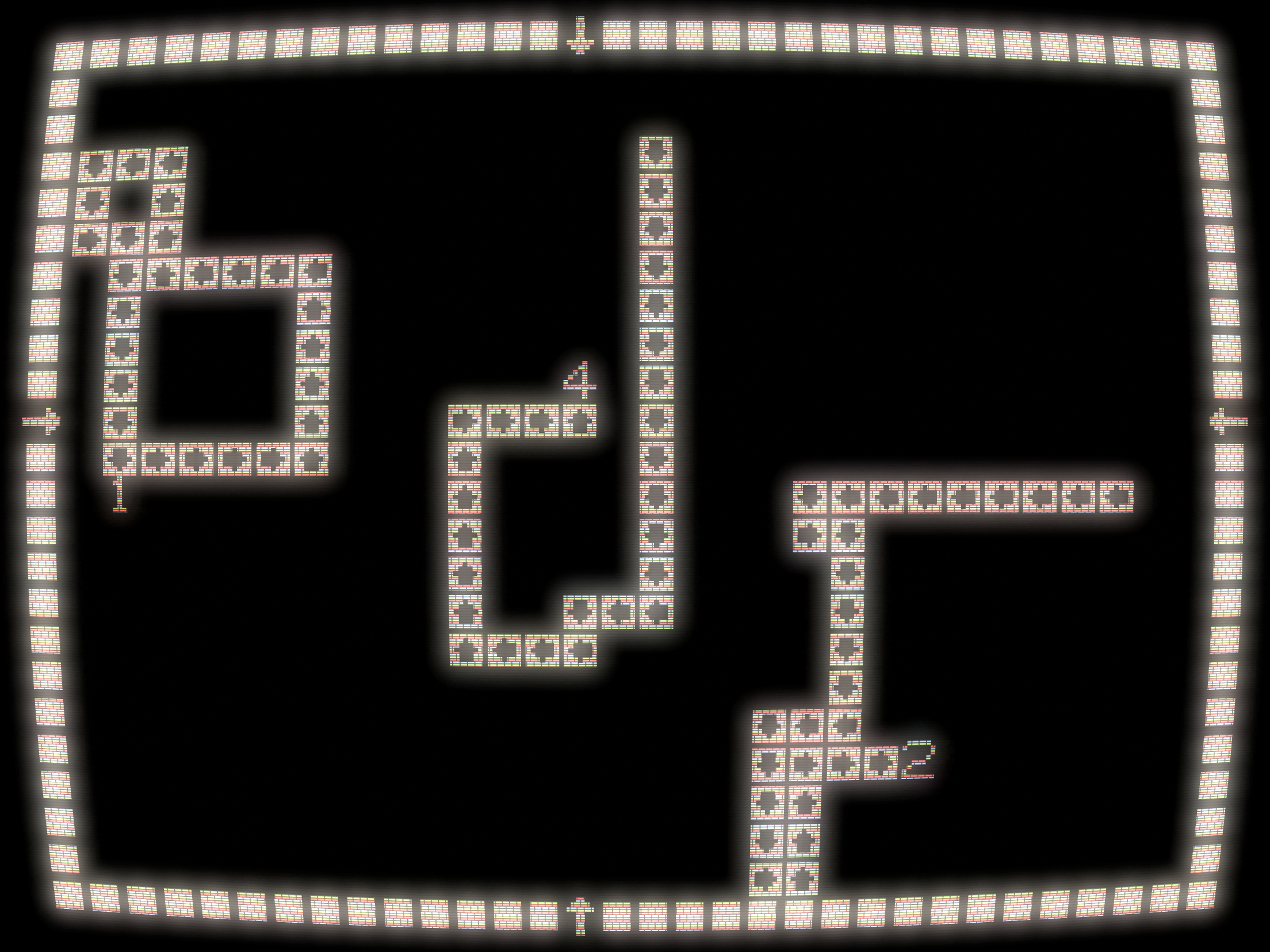
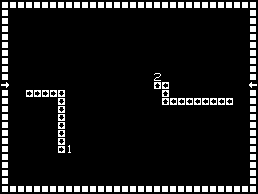 The Game: Up to four players control markers that leave a solid “wall” in their wake. The object of the game is to trap the other players by building a wall around them that they can’t avoid crashing into – or forcing them to crash into their own walls. Run into a wall, either your own or someone else’s, ends your turn and erases your trail from the screen (potentially eliminating an obstacle for the remaining players). The player still standing at the end of the round wins. (Ramtek, 1976)
The Game: Up to four players control markers that leave a solid “wall” in their wake. The object of the game is to trap the other players by building a wall around them that they can’t avoid crashing into – or forcing them to crash into their own walls. Run into a wall, either your own or someone else’s, ends your turn and erases your trail from the screen (potentially eliminating an obstacle for the remaining players). The player still standing at the end of the round wins. (Ramtek, 1976)